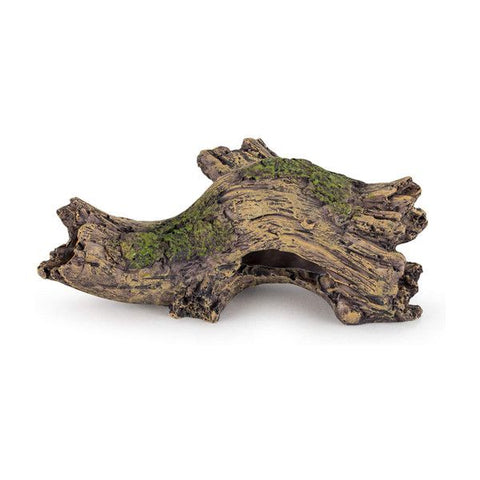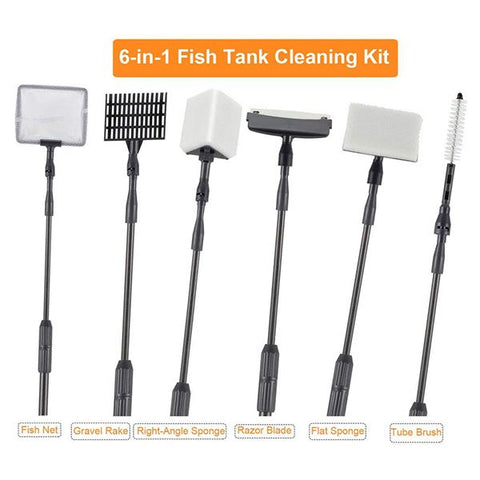In order to make the fish tank more ornamental and more comfortable for fish to live, aquarists will add some decorations to their aquariums. One of the most famous decorations is driftwood.
You may be curious about driftwood, but don’t worry, this article will help you have a better understanding of driftwood. It will give you a brief introduction to driftwood as well as what preparations should you make before putting them in your aquarium.
What is a driftwood
Driftwood is wood that has been washed onto a shore or beach of a sea, lake, or river by the action of winds, tides or waves. As a decoration in a fish tank, it provides a shelter for fish or other aquarium pets to hide and for beneficial bacteria to grow. It will also provide food for the creatures in the fish tank.

Benefits of adding driftwood to your fish tank
1. Add ornamental value to your fish tank
As a decoration with a natural outlook, drift can make your fish tank more beautiful while adding a natural landscape to it, which will make your fish feel more comfortable.
2. Provide shelter for aquarium pets
Many fish require a hiding place in the fish tank, driftwood can meet their demands. They can provide a good shelter for fish that are sensitive to the light and water current, and also protect them from threats. In addition, driftwood is suitable for fish to lay their eggs and hatch them without any disturbance.
3. Balance the ecosystem in your fish tank
Not only can it provide shelter for aquarium pets, but also offer an ideal place for beneficial bacteria to grow, which will help clean the water and create a stable environment for your fish to live.
4. Lower the PH level
We need to soak or boil the driftwood to release the tannins in it, but we can never make sure the tannins have been removed thoroughly.
Actually, we can not release them all. The PH level in your fish tank will become higher day by day, the tannins released from it can lower it and make your aquarium suitable for fish to survive.
How to clean driftwood
Cleaning driftwood is very simple. You can use tap water to rinse it, but for the dirt left after being rinsed, you may need some tools such as a small brush to remove it.
When you make sure there is no dirt remaining, the cleaning step is finished. But do remember not to use chemical materials to clean it since the components of such materials are detrimental to your fish’s health.

Soak your driftwood
You may be confused, the driftwood will be submerged into the fish tank, why should I need to soak it before putting them into the aquarium? The truth is, soaking driftwood for a while before placing them in the tank is very helpful.
We know that driftwood is a dry wood, which means it will float on the water surface before it gets fully waterlogged and falls to the bottom of the fish tank.
Soaking the driftwood in a bucket full of water for several hours is a process of saturating, which will make sure the driftwood can be put in the proper place immediately without annoying fish in your fish tank.
Moreover, when you soak it in the water, you will find the water becomes darker and turbid, that’s because the driftwood is releasing a substance called tannins.
The tannins are not toxins, they will not poison your fish or hurt your fish, but they will lower the pH level of the water in your tank with time passing by. For fish that require a high pH level, soaking driftwood before adding it to the tank is beneficial.
Note: The water you use to soak the driftwood should be treated water. If you only have tap water in your home, you must dechlorinate the tap water before using.
Do you need to boil the driftwood
Yes, it is a necessary process! When you think about boiling, what comes into your mind first? It’s high temperature, right? So what’s the function of high temperature? It’s disinfection. Boiling the driftwood can kill the germs that you can not clean by rinsing it, which makes it safer for fish.
Molecules will move faster when the temperature is higher, that’s the other reason why you need to boil the driftwood. Boiling brings a rise in temperature, which will speed up the process of tannins releasing and shorten the process of saturating.
How long should you boil the driftwood
Now that we have known we need to boil the driftwood before putting it, but how long should I boil it? Normally speaking, 1-2 hours are enough for you to sterilize and make it proper for your fish and aquarium.
Where to put the driftwood in your fish tank
After you have cleaned, soaked and boiled the driftwood, you can put it into your fish tank, but where to put it is a problem. It depends on your preference, you can design by yourself, but you need to make sure it will not affect the daily life of your fish.
How to remove excessive tannins in your aquarium
As we mentioned in the former paragraphs, driftwood will release tannins when being put in water. We can remove most of them in the process of soaking and boiling, and a proper amount of tannins can help lower the pH level of the water. But what should we do if the tannins in our aquarium are excessive?
You can buy a filter with chemical filtration or use activated carbon to remove the excessive tannins in your aquarium.

Other decorations for your fish tank
We have introduced one of the decorations you can put in your fish tank, which is driftwood. But what if I don’t want to add driftwood to my fish tank, or I want to add more decorations to it? Well, there are some recommendations for you to decorate your aquarium.- Aquarium substrate
- Plants
- Background
- Stones and rocks


Comments (0)
Back to Beginner Guide & Advice